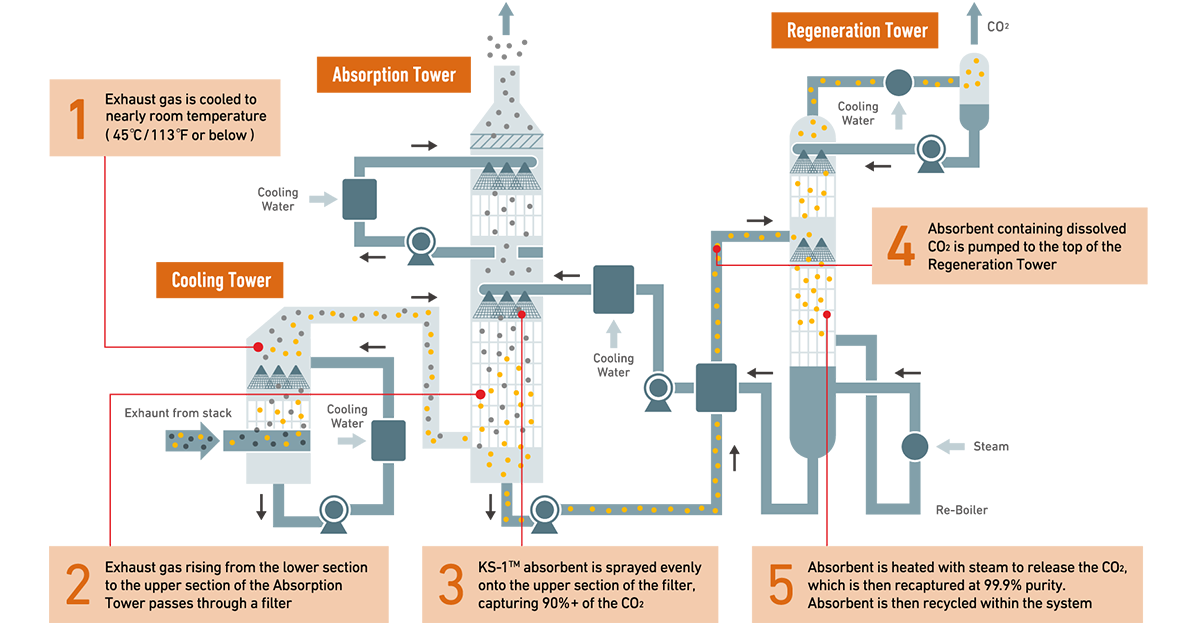From Niche to Necessity: Why CCUS Is Poised for Breakout Growth
By Tatsuto Nagayasu – September 16, 2025
Carbon Capture, Utilization, and Storage (CCUS) technology first emerged in the 1970s, with the first large-scale projects appearing in the 1990s. Yet, over three decades later, CCUS has remained a niche solution, primarily used in industrial processes and often overshadowed by renewable energy and even nuclear power when it comes to cutting CO₂ emissions.

I believe that is about to change. A growing sense of urgency among countries, industries, and companies to accelerate decarbonization—combined with a new class of customers willing to pay for reliable clean energy—is setting the stage for CCUS to scale dramatically. This shift comes at a critical time: the International Energy Agency (IEA) has stated that CCUS will be essential to achieving global net-zero emissions by 2050, particularly in decarbonizing hard-to-abate sectors such as cement, steel, and chemicals.
A Changing Market Landscape
Until recently, the only companies able to make CO₂ capture economically viable were industrial players that could generate revenue from using the captured CO₂—such as for urea or methanol production. Almost all of the 18 CO₂ capture facilities built by Mitsubishi Heavy Industries (MHI) Group, the global leader in this field, have served petrochemical clients.
For those simply seeking to reduce emissions, CCUS was often prohibitively expensive. That is changing rapidly. In the United States, demand for clean and reliable electricity is soaring as hyperscalers—Microsoft, Google, Amazon, and other tech giants—rush to power their ever-expanding data centers. These firms have set strict climate targets, with most aiming for net zero by 2030.
They need massive amounts of power, delivered reliably, and cannot afford downtime of even a few seconds. This rules out intermittent renewables as a standalone option, while pairing renewables with large-scale battery storage remains costly over the 25–30-year lifespan of a data center. Nuclear power is an alternative but takes a decade or more to deploy. This makes gas turbine combined-cycle (GTCC) plants equipped with CCS systems one of the most practical solutions—offering both speed and competitive lifetime costs.
Public Support Unlocks Growth
Despite its promise, CCUS is still expensive. Independent data shows that adding CCS can increase the cost of a GTCC plant by over 50%. Public support is therefore crucial, much as government subsidies helped renewables scale. The U.S. administration has reaffirmed its 45Q tax credit for CO₂ capture—an encouraging sign—while support for other clean technologies is gradually being scaled back.
In the UK, the government has gone further by underwriting the decarbonization of its major industrial clusters. This led to the first Final Investment Decision (FID) in December for a large CCS project at the Net Zero Teesside cluster in northeast England. Similarly, Japan has pressed ahead with its largest CO₂ capture initiative to date, awarding a Front End Engineering Design (FEED) order to MHI for a project at Hokkaido Electric Power’s Tomato-Atsuma power station, supported by JOGMEC with plans for subsea storage.
From FEEDs to FIDs: Market Momentum Builds
Momentum is accelerating. MHI’s GX (Green Transformation) Solutions division is currently working on 30–40 CCUS customer inquiries, with about five in the FEED stage. Many of these are expected to move into FIDs and ultimately to firm orders.
Large-scale CO₂ capture facilities typically take around three years to construct. However, modular systems—such as MHI’s CO₂MPACT™ series—can be deployed far faster. These systems are over 90% standardized, prefabricated, and delivered in a container-like format. Demand is growing among industries eager to demonstrate practical uses for captured CO₂, including agricultural applications such as growing tomatoes, strawberries, and melons.
Building a Complete CCUS Value Chain
As the CCUS market grows, MHI’s 70% global market share will inevitably shrink, though absolute revenues are expected to rise significantly. The company plans to remain a leader by continuing to improve its amine-based CO₂ capture technology—already among the most efficient available—and by broadening its offerings to include modular systems and even onboard CO₂ capture solutions for FPSO vessels in the oil industry.
MHI is also investing in the full CCUS value chain. Mitsubishi Shipbuilding is developing liquefied CO₂ carriers, while Mitsubishi Heavy Industries Compressor Corporation supplies key compression technology for storage sites. Additionally, MHI is collaborating with partners like ExxonMobil to offer a full “end-to-end solution,” combining capture, transportation, and storage capabilities, as well as early-stage project development and operational support.
A Critical Role in Decarbonization
All these efforts signal a new era for CCUS—one in which the technology transitions from a niche industrial solution to a mainstream decarbonization tool. When that moment arrives, CCUS will make a significant contribution to global efforts to fight climate change.






